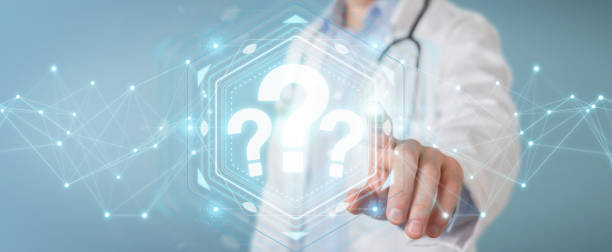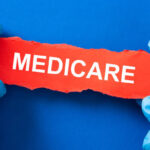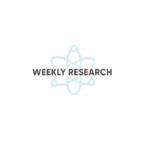CPT code 99091 billing guidelines for remote patient monitoring services were developed by the Centers for Medicare and Medicaid Services (CMS) because CMS recognized the time it takes to analyze and interpret patient physiological data to treat patient health conditions. Like all 5 remote patient monitoring CPT codes (99453, 99454,99457, 99458, and 99091), CPT code 99091 has a unique set of guidelines for Medicare reimbursement.
This comprehensive CPT code 99091 billing guide for remote patient monitoring outlines all you need to know for Medicare billing. These frequently asked questions and answers appear in 3 categories:
- Billing Guidelines for Provider & Patient
- Reimbursement Service Requirements
- RPM Device Reimbursement Guidelines
CPT Code 99091 Billing Guidelines: Provider & Patient
In 2018, Medicare approved coverage and payment (CPT code 99091) for collecting and interpreting digitally transmitted and stored physiologic data by a physician or other qualified healthcare professional. The 2024 CMS final rule allows providers to utilize remote patient monitoring services to improve patient care experiences and health outcomes while generating increased revenue.
CPT 99091 Billing Guidelines: Who Performs the Services?
Regarding CPT code 99091 billing guidelines for remote patient monitoring, CMS requires that the physiologic data collected and transmitted must be analyzed by a ‘‘physician or other qualified health care professional.” Data analysis and interpretation occur once the data is transmitted and collection occurs (CPT codes 99453 and 99454).
CMS billing guidelines for remote patient monitoring define a qualified healthcare professional as “an individual who is qualified by education, training, licensure/regulation (when applicable) and facility privilege (when applicable) who performs a professional service within his/her scope of practice and independently reports that professional service.”
Which Medicare Patients Qualify for CPT 99091?
Currently, CPT code 99091 billing guidelines for remote patient monitoring state that all Medicare beneficiaries qualify for RPM services. This means that all Medicare patients can participate in remote patient monitoring. Interestingly, CMS considers remote patient monitoring a telehealth service; however, Medicare does not consider remote patient monitoring a telehealth service. Therefore, Medicare covers patient-at-home remote patient monitoring devices. In addition, patients do not have to live in a rural area or qualifying originating site.
At the same time, there are some billing requirements for all 5 remote patient monitoring CPT codes:
- An RPM device must fit within the FDA’s definition of a medical device.
- The patient must opt-in for the service before ordering a device.
- A new patient evaluation is needed for patients new to RPM.
- Patients already enrolled in RPM during the Public Health Emergency (PHE) can continue receiving RPM services.
- The patient must use the RPM device for at least 16 days a month to bill for CPT codes 99453 and 99454.
- All data collection must be HIPAA-compliant.
Which Health Conditions Qualify for CPT 99091?
The CMS 2021 Final Rule, CMS made it possible for clinicians to provide RPM services for patients with acute and chronic conditions.
What Services Does CPT Code 9909 Cover?
CMS Final rule states explicitly, “Collection and interpretation of physiologic data (e.g., ECG, blood pressure, glucose monitoring) digitally stored and/or transmitted by the patient and/or caregiver to the physician or other qualified healthcare professional, qualified by education, training, licensure/regulation (when applicable) requiring a minimum of 30 minutes of time, each 30 days.”
To enumerate, 99091 covers a minimum of 30 minutes in a calendar month for the time it takes clinical staff to gather, interpret, and process RPM data transmitted by a patient. It also covers at least one communication, occurring by phone or email, where medical management or monitor advising occurs.
Do Billing Guidelines Allow 99091 and 99457 to be Billed Together?
No. Healthcare organizations cannot bill CPT codes 99091 and 99457 together for the same billing period. However, it is essential to remember that time spent furnishing these services is billed under a different CPT code, 99457, and must not be counted towards the required time for RPM and Chronic Care Management (CCM) CPT codes.
What is the Guideline Billing Rate for CPT Code 99091?
The current CPT code 99091 billing guidelines for remote patient monitoring average (rounded) national payment rate for CPT code 99091 is $52.71 This is a rounded rate and varies by region.
How Often Can CPT Code 99091 be Billed?
CPT 99091 is billable up to one time in 30 days per patient. 99091 services require documentation of time devoted by a physician or other qualified healthcare professional to accessing RPM data, reviewing and interpreting the data, and/or modifying a patient’s treatment plan as appropriate. This includes communication with the patient or caregiver.
What Qualifies as a Communication for CPT 99091?
Billing for CPT 99091 requires at least one instance of communication between a physician or a qualified healthcare professional. Therefore, CMS believes ongoing communication and coordination between practitioners and patients is essential.
Remote patient monitoring allows healthcare providers to increase virtual and digital communication. Approved provider and patient communication can occur via phone, video call, email, or text exchange.
RPM Device Reimbursement Guidelines for CPT 99091
Healthcare providers can prescribe remote physiological monitoring devices to capture patient vital signs and monitor certain health conditions regularly. This final section provides answers to questions concerning remote patient telehealth monitoring devices.
Must Devices be FDA Cleared to Bill for Remote Patient Monitoring?
CMS states that RPM devices must be “medical devices as defined by the FDA.” Medicare does not require the device to be cleared by the FDA. It is important to note that some providers may require using FDA-cleared Class II remote patient monitoring devices. In addition, an RPM medical device is marketed as FDA-registered, it does not mean it is FDA-cleared. With FDA-cleared remote patient monitoring medical devices, healthcare organizations and patients can rest assured that they receive instant and reliable patient health data remotely.
Which Remote Patient Monitoring Devices Qualify for Reimbursement?
Cellular networks or Bluetooth technology connect RPM devices. Physicians and patients may use several RPM devices for remote patient monitoring services. Some standard monitoring devices include:
What if a Patient Uses Multiple RPM devices?
A patient may have more than one health condition that requires remote patient monitoring. Therefore, one patient may use multiple RPM devices.
Can a Provider Bill for Multiple Devices?
No, a provider cannot bill for multiple devices according to CMS guidelines, when a patient uses more than one device for remote patient monitoring. For example, for a blood pressure monitor and a blood glucose meter, a provider can bill for only one device (not multiple devices) per patient every 30 days.
Does CMS Allow Outsourcing for CPT 99091?
Yes. Healthcare organizations can outsource RPM services to third-party remote monitoring companies. For example, third-party remote patient monitoring companies can perform specific RPM duties on behalf of a healthcare provider. As a result, outsourcing can benefit a health organization, providing more time for a physician to focus on delivering the best possible patient care. In contrast, logistics can then be administered by a qualified third-party RPM company.
These partners can help healthcare organizations save time by performing device set-up, education, data review, and facilitating the billing processes. In addition, Tenovi serves companies that offer remote patient monitoring solutions to healthcare providers: RPM service and software, chronic care management, and telehealth companies. Would you like to learn more? Book a free demo with Tenovi today.






